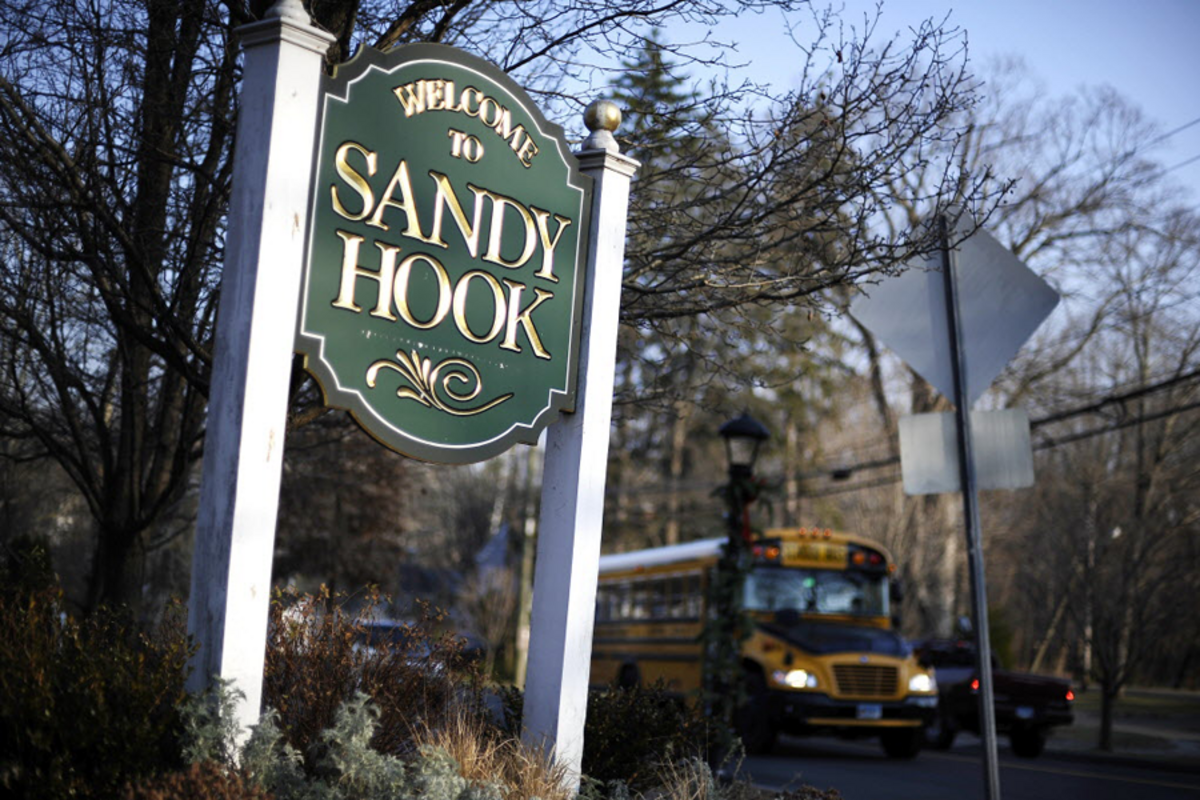Sandy Hook 911 tapes: You can listen to them, but should you?
Loading...
With the release of seven calls to 911 during the Sandy Hook Elementary School shootings in Newtown, Conn., last December, it’s now possible to hear how emergency dispatchers handled some of the information flowing in – before anyone but the primary witnesses knew the full extent of the tragedy.
For news consumers, the questions now are, “Do I want to listen?” and “Do I need to listen?”
As with other opportunities to view or hear potentially disturbing details of a violent scenario, each person will have to assess whether there’s anything to be gained, or whether there’s potential for harm, by tuning in. (A summary of the tapes’ contents appears later in this story.)
“Just because something is available doesn’t mean we should avail ourselves of it,” says David Schonfeld, director of the National Center for School Crisis and Bereavement at St. Christopher's Hospital for Children��������Philadelphia. “Particularly for children, we should limit their exposure to such content.”
Parents may well be aware that children should be protected, but what about adults? If they take in too many details of the shootings – perhaps on impulse, the way people turn to see an accident on the side of the road – it might make them more anxious or overprotective of their children, says Gene Beresin, executive director of the Clay Center for Young Healthy Minds at Massachusetts General Hospital and a Harvard psychiatry professor.
“People have to take stock of their own strengths and weaknesses,” he says. For someone coming to terms with a tragedy, the details of how the police responded might “strengthen their own resolve to make the world a better place,” he says.
To decide on whether to consume such material, people should ask themselves why they would, what it might enhance in their life, and whether they are attracted simply out of voyeurism, Mr. Beresin says.
Some may even be drawn to such material in a self-destructive way, like someone diagnosed with post-traumatic stress disorder who may replay the trauma through other depictions of violence, he adds.
Whatever one’s motives for listening might be, whoever chooses to do so should also understand there may be limits on what they can glean from the tapes. Unless they have some expert background that gives them special insight, experts advise against “armchair quarterbacking.”
“The risk with the general population is that there will be misunderstandings, because they don’t know what it’s really like to be dealing with an incident of this magnitude and they expect it to be like TV,” says Francine Roberts, a clinical psychologist in Marlton, N.J., who treats first responders.
People might wonder whether responses could have been faster or better, for instance. “People who have no knowledge of what went on there will make comments [on websites, for instance]…. The public is well meaning, but often they say things that are hurtful to the people that did their very best to provide as much response as possible,” Dr. Roberts says.
For the dispatchers, police, emergency medical staff, and others in the Newtown area, the release of the tapes is yet another moment that could potentially trigger emotional responses.
Some first responders may have already listened to the tapes, and whether that’s wise in general in the aftermath of a tragedy depends on where each one is in his or her own recovery, Roberts says. For some, it can be healing to “put pieces together to make sense of the incident that they may not have been aware of,” she says. For others, it might be wise to stay off Facebook awhile until the comments people are making about the tapes pass, she says.
A 2012 study by researchers at Northern Illinois University found that 3.5 percent of surveyed first-responders had symptoms of PTSD.
Many people directly affected by the tragedy will not want to listen to the tapes, and some local officials fought to keep them from being released.
Newtown’s interim school superintendent, John Reed, sent a letter to families urging them not to expose children to the tapes.
Newtown First Selectman Pat Llodra wrote in her blog that the release “will create a new layer of pain for many.… My plea is for the media to treat us kindly ... to recognize that there is great personal pain in this event and little public good to be garnered through the general release.”
The tapes were made available to the media Wednesday after a court sided with the Associated Press’s longstanding request for access. Additional calls routed through the State Police are the subject of a pending Freedom of Information request, the Associated Press reports.
The Monitor listened to the recordings via the Connecticut Post website on Wednesday afternoon.
For readers who are interested, here’s a brief summary of the content, and a comment from a school security expert:
As information of a shooting comes in, a dispatcher can be heard saying, apparently to police, “Get everyone you can going down there.”
In one of the calls from inside the school, a woman breathing heavily as if she has been running reports seeing a gunman in the hallway. The dispatcher urges her to keep people calm and stay away from windows.
Rick Thorne, a custodian, calls from a part of the school where the shootings are not taking place, saying, “I keep hearing shooting. I keep hearing popping.” After staying on the line for several minutes, he says, “There’s still shooting going on. Please!” and shots can be heard in the background on the recording.
In a conversation with a woman who had been shot in the foot, a dispatcher asks if she is OK, reassures her that help is on the way, and tells her to apply pressure to the wound. The dispatcher also finds out the woman is in a room with children and two other adults, and asks if the room is locked. When the woman says it is not, the dispatcher asks if anyone can lock it while still staying safe, and she says no.
Much of the content of the recordings is communications among dispatchers, including calls to state police.
In assessing the calls, Kenneth Trump, president of National School Safety and Security Services in Cleveland, Ohio, tells the Monitor the dispatchers showed “a firm grasp of what needed to be done” and were “calmer than one might imagine” given the situation and the volume of calls coming in.
“These calls also reinforce the importance of training and empowering school support staff for responding in a crisis,” he says, given that the custodian and other support staff relayed information about the building to police and oversaw much of the lockdown procedures.





